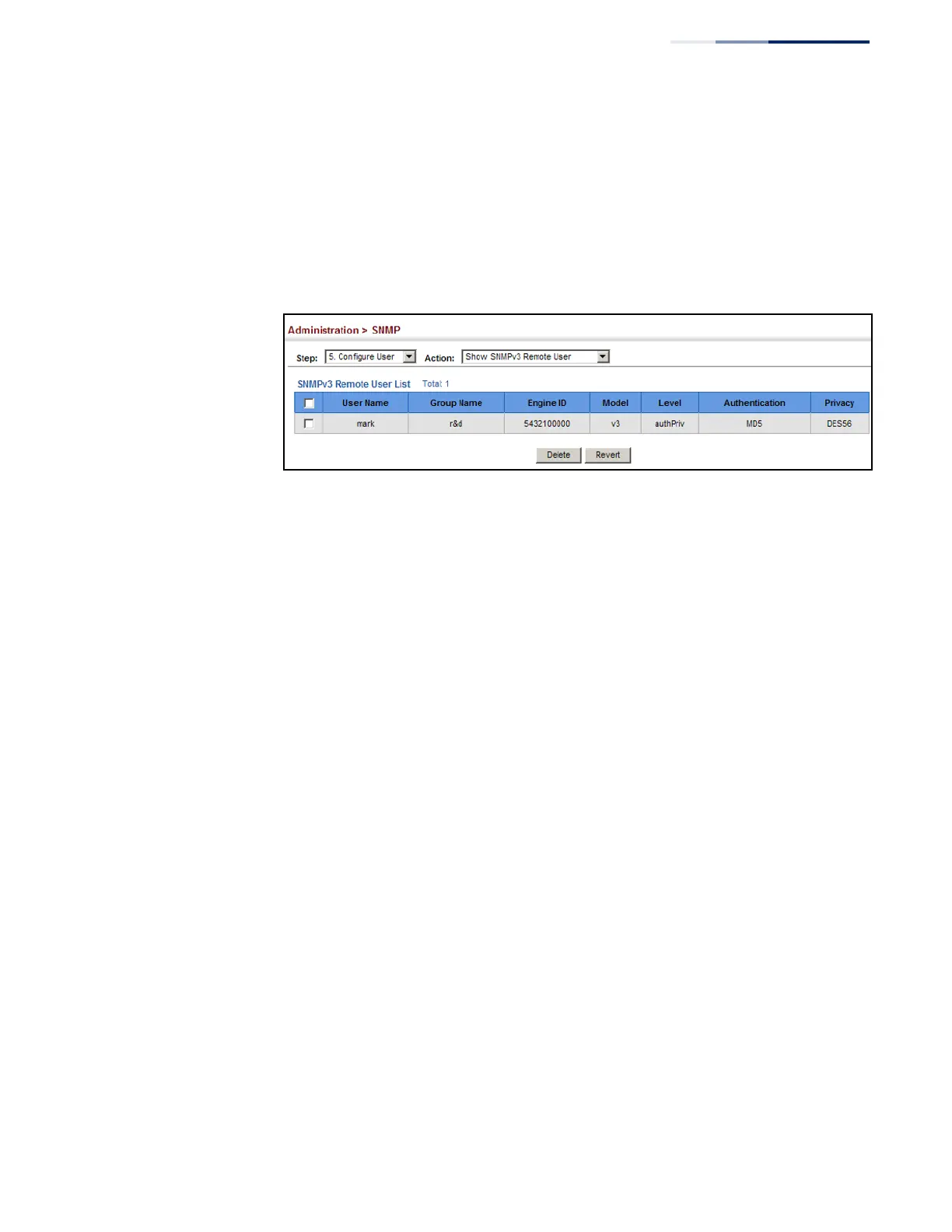Chapter 13
| Basic Administration Protocols
Simple Network Management Protocol
– 403 –
To show remote SNMPv3 users:
1. Click Administration, SNMP.
2. Select Configure User from the Step list.
3. Select Show SNMPv3 Remote User from the Action list.
Figure 258: Showing Remote SNMPv3 Users
Specifying
Trap Managers
Use the Administration > SNMP (Configure Trap) page to specify the host devices to
be sent notifications and the types of notifications to send. Notifications indicating
status changes are issued by the switch to the specified notification managers. You
must specify notification managers so that key events are reported by this switch to
your management station (using network management software). You can specify
up to five management stations that will receive authentication failure messages
and other notification messages from the switch.
Command Usage
◆ Notifications are issued by the switch as trap messages by default. The recipient
of a trap message does not send a response to the switch. Traps are therefore
not as reliable as inform messages, which include a request for
acknowledgement of receipt. Informs can be used to ensure that critical
information is received by the host. However, note that informs consume more
system resources because they must be kept in memory until a response is
received. Informs also add to network traffic. You should consider these effects
when deciding whether to issue notifications as traps or informs.
To send an inform to a SNMPv2c host, complete these steps:
1. Enable the SNMP agent (page 387).
2. Create a view with the required notification messages (page 390).
3. Configure the group (matching the community string specified on the
Configure Trap - Add page) to include the required notify view (page 393).
4. Enable informs as described in the following pages.
To send an inform to a SNMPv3 host, complete these steps:
1. Enable the SNMP agent (page 387).

